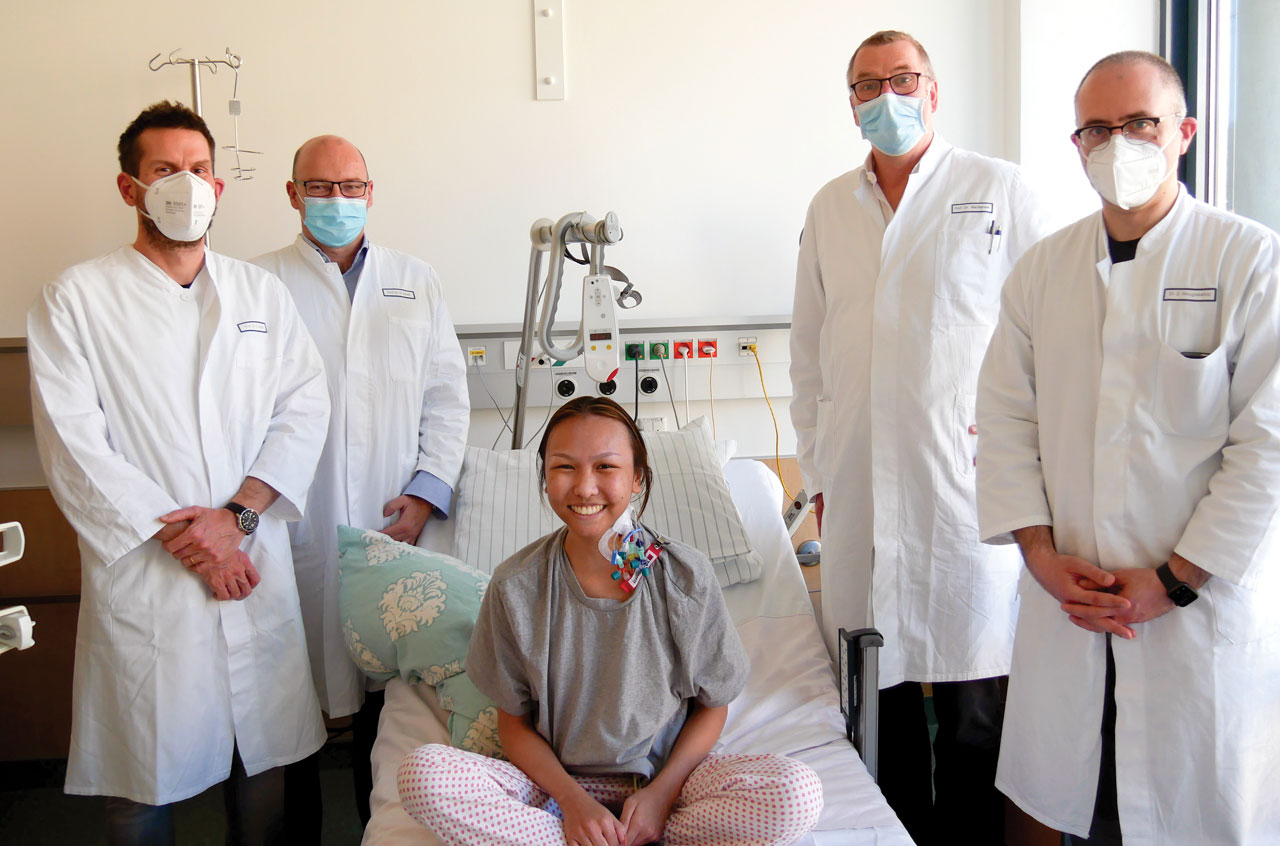
The current environment for autoimmune disease treatment is characterized by a significant, though uneven, departure from the generalized, systemic immunosuppression that defined earlier eras. What was once a therapeutic choice between non-specific steroids and older immunosuppressive drugs is now a complex, multi-modal landscape that integrates highly targeted biologics, burgeoning cellular therapies, and a profound shift towards personalized medicine. The fundamental issue remains the immense heterogeneity of these conditions; the term “autoimmune disease” is a vast umbrella, encompassing everything from the chronic joint destruction of rheumatoid arthritis (RA) to the multi-organ system assault of systemic lupus erythematosus (SLE). This internal diversity, driven by intricate interplays among genetic predispositions, environmental determinants, and hormonal fluctuations, ensures that a single, universally effective cure has yet to be realized, with existing modalities largely providing palliative care rather than definitive resolution. Finding effective treatments for these diseases is, therefore, still an iterative, trial-and-error process, but the pace of innovation—especially in the realm of targeted biological agents and immune system re-engineering—suggests that clinicians are finally gaining tools sophisticated enough to match the conditions’ complex pathogenesis. The goal has evolved from merely controlling symptoms to achieving a state of sustained remission while minimizing the detrimental side effects of long-term immune suppression, a balancing act that demands increasingly precise therapeutic interventions informed by molecular data.
The pathogenesis of these conditions is multifactorial, encompassing intricate interplays among genetic predispositions, environmental determinants, and hormonal fluctuations.
To truly grasp the advancements in treatment, one must first appreciate the inherent complexity of the targets. The pathogenesis of these conditions is multifactorial, encompassing intricate interplays among genetic predispositions, environmental determinants, and hormonal fluctuations. Autoimmunity arises from a fundamental dysregulation within the immune system, leading to an aberrant assault on the organism’s own tissues. In rheumatoid arthritis, for example, the sustained inflammatory environment in the joints is driven by a cascade involving pro-inflammatory cytokines like TNF-α and Interleukins, but the specific cellular triggers can vary widely between individuals. In systemic lupus erythematosus, the production of various autoantibodies that target everything from cellular nuclei to blood elements complicates the clinical picture, resulting in the variable severity of involvement even within the same organ manifestation. The sheer number of potential drivers and pathways means that a “one-size-fits-all” drug is fundamentally limited in its application, necessitating therapeutic strategies that can be adapted to an individual’s unique molecular fingerprint, a concept that is the core of modern precision medicine in this field.
Traditional therapies for autoimmune illnesses, such as immunosuppressive therapy and biologics, attempt to alleviate symptoms but frequently fall short of offering personalized care.
For decades, the standard approach relied on dampening the immune response broadly. Traditional therapies for autoimmune illnesses, such as immunosuppressive therapy and biologics, attempt to alleviate symptoms but frequently fall short of offering personalized care. These broad-spectrum agents, including glucocorticoids (GCs) and Immunosuppressive Drugs (ISDs) like methotrexate or azathioprine, are effective at quickly bringing disease activity under control, particularly in acute, organ-threatening flares. However, their long-term use is plagued by substantial risks, including increased susceptibility to infections, cardiovascular complications, and osteoporosis. The advent of biologic agents—monoclonal antibodies that target specific molecules, receptors, or cytokines, such as TNF inhibitors or B-cell depleting agents like rituximab—represented a significant, though still often generalized, improvement. While these biologics are more focused than steroids, they still rely on an empirical selection process. Clinicians frequently start a treatment and wait months to see if the patient is a responder, a time-consuming and discouraging process that highlights the inherent limitations of this non-personalized, yet necessary, foundational approach.
Prompt initiation of ISDs (methotrexate, azathioprine, mycophenolate) and/or biological agents (anifrolumab, belimumab) should be considered to control the disease and facilitate GC tapering/discontinuation.
Current clinical guidelines for diseases like rheumatoid arthritis and systemic lupus erythematosus now stress a more aggressive, earlier approach to mitigate long-term damage. Prompt initiation of ISDs (methotrexate, azathioprine, mycophenolate) and/or biological agents (anifrolumab, belimumab) should be considered to control the disease and facilitate GC tapering/discontinuation. The emphasis here is twofold: early diagnosis is essential to prevent irreversible joint or organ damage, and the rapid deployment of disease-modifying agents is critical to achieving remission or low disease activity. Newer biologics, such as anifrolumab (a Type I interferon receptor antagonist) and belimumab (a B-cell activating factor inhibitor), are increasingly positioned to be used early, often in combination, particularly for complex conditions like SLE, where recent high-quality evidence points towards the superior efficacy of combination treatments in managing manifestations like lupus nephritis. The strategic goal of this aggressive initiation is always to secure disease control fast enough to allow for the tapering and ultimate discontinuation of glucocorticoids, thereby avoiding their chronic, debilitating toxicity.
As the name suggests, personalized medicine tailors therapies to each individual patient.
The most transformative wave of innovation is centered on precision medicine. As the name suggests, personalized medicine tailors therapies to each individual patient. This paradigm shift moves away from managing disease based solely on clinical symptoms and instead leverages a patient’s unique molecular and genetic profile. By utilizing advanced diagnostics like genomic sequencing, cytokine profiling, and disease-specific autoantibody identification, it is becoming possible to make treatment decisions based on hard, molecular data. For instance, knowing a patient’s specific cytokine profiles can guide the choice of a biologic drug, ensuring that an anti-TNF agent is only used when that specific inflammatory pathway is confirmed to be dominant. The overarching promise is to dramatically improve drug effectiveness while simultaneously reducing harmful side effects by ensuring the right drug reaches the right patient at the right time, minimizing the unproductive and damaging trial-and-error cycle of the past.
Cellular therapies are emerging as promising approaches for the treatment of autoimmune diseases.
Taking personalization to its extreme are the experimental, yet exceptionally promising, cellular therapies. Cellular therapies are emerging as promising approaches for the treatment of autoimmune diseases. Building on their success in oncology, these methods, often called the fourth pillar of oncological management, are now being adapted to re-engineer the immune system in severe, refractory autoimmunity. The most visible of these is the application of Chimeric Autoantibody Receptor (CAR)-T cell therapy, which involves extracting a patient’s own T cells, genetically modifying them to target and eliminate specific immune cells—such as autoreactive B cells expressing markers like CD19—and then reinfusing them. This allows for the precise, and potentially long-lasting, depletion of the cells responsible for secreting pathogenic autoantibodies. Other approaches involve engineering Tregs (Regulatory T cells) to increase their ability to suppress unwanted immune responses. While highly resource-intensive and currently reserved for the most severe cases, cellular therapy offers the radical potential to achieve an enduring, drug-free remission, a true transformation of the therapeutic goal from palliation to potential resolution.
The future of precision medicine for autoimmunity will rely in AI-guided personalized approaches, enabling the design of highly specific therapies to target disease-causing autoreactive cells while preserving immune function.
Looking ahead, the sheer volume of multi-omics data—genomics, proteomics, metabolomics—necessary to achieve true personalization necessitates the use of advanced computing. The future of precision medicine for autoimmunity will rely in AI-guided personalized approaches, enabling the design of highly specific therapies to target disease-causing autoreactive cells while preserving immune function. Artificial Intelligence (AI), particularly Machine Learning (ML), is uniquely suited to discern the subtle patterns and associations within massive datasets that human clinicians cannot detect. AI-driven models are already being developed to improve diagnosis accuracy, discover new biomarkers, predict disease prognosis, and refine treatment modalities by identifying which patient subgroups will respond best to a given therapy. Although still facing challenges such as algorithmic bias, the requirement for vast datasets, and the need for model interpretability, AI’s capacity for patient stratification and predictive modeling marks a significant, transformative step in clinical decision-making.
The lupus centre approach ensures a holistic and coordinated approach to managing SLE, addressing both the medical and psychosocial aspects and providing the best overall care.
The complexity of these diseases often extends far beyond the immune system, demanding a care model that transcends a single specialist. For a condition like systemic lupus erythematosus, the lupus centre approach ensures a holistic and coordinated approach to managing SLE, addressing both the medical and psychosocial aspects and providing the best overall care. This multidisciplinary (MD) approach often involves a core team consisting of a rheumatologist, psychologist, nurse, and sometimes specialists like gynecologists or nephrologists, all working in concert. This coordinated care is vital because lupus is characterized by multisystemic clinical manifestations and can have a profound psychological impact. Addressing non-immunological issues like chronic pain, fatigue, and psychosocial support is not merely supplementary; it is crucial for improving the patient’s health-related Quality of Life (hrQoL), enhancing treatment adherence, and ultimately leading to favorable long-term outcomes, demonstrating that effective management is as much about the human experience as it is about the molecular target.
By prioritising a more patient- centred approach, SLE care can evolve to address not only the science but also the lived experience of the disease, fostering a truly holistic model of care.
A crucial element of effective long-term management is the prioritization of the patient’s own experience and perception of their health. By prioritising a more patient- centred approach, SLE care can evolve to address not only the science but also the lived experience of the disease, fostering a truly holistic model of care. This shift involves recognizing and respecting patient-reported outcomes, such as the severity of fatigue or brain fog, even when objective laboratory markers may not fully reflect their distress. There remains a tendency among physicians to focus only on manifestations with established treatment pathways, sometimes avoiding a discussion of difficult-to-treat symptoms for which a definitive, evidence-based cure is lacking. A truly compassionate and comprehensive approach, however, requires acknowledging and respecting symptoms for which there is no immediate pharmacological solution, and directing attention instead to non-pharmacological interventions like tailored physical activity or targeted psychological support, thereby improving patient satisfaction and fostering a stronger, more trusting clinical partnership.
The most effective therapeutic approach requires early diagnosis and an optimal nonpharmacological and pharmacological treatment, associated with periodic evaluation of therapeutic efficacy and safety.
In summation, navigating the autoimmune treatment landscape demands a strategic, integrated methodology. The most effective therapeutic approach requires early diagnosis and an optimal nonpharmacological and pharmacological treatment, associated with periodic evaluation of therapeutic efficacy and safety. This is a fluid process, not a static prescription. Treatment is initiated aggressively to achieve the target of remission or low disease activity; therapeutic response is rigorously monitored using a blend of clinical and molecular markers; and the regimen is adjusted continuously—often involving the introduction of newer biologics or the cautious consideration of cutting-edge cellular approaches—to maintain control while mitigating the risks of immunosuppression. Furthermore, non-pharmacological interventions like patient education and physical therapy are integrated to support the medical goals, confirming that the path forward for treating these chronic, complex diseases is one of relentless precision and adaptive, patient-centered care, moving ever closer to eliminating disease activity and ensuring a high quality of life.
Screening strategies of people at risk of developing RA may result in lower incidence and prevalence rates.
The final frontier in this domain is not treatment, but prevention. Screening strategies of people at risk of developing RA may result in lower incidence and prevalence rates. Identifying individuals with subclinical autoimmunity—those who may be seropositive for autoantibodies like ACPA but have not yet developed clinical symptoms—opens a window for primary prevention. While this remains an area of intensive research, the ability to pinpoint individuals at high risk, such as blood relatives of patients, could eventually lead to the implementation of pre-emptive, low-intensity interventions that prevent the pathological processes from commencing at all. This would shift the medical field’s focus from fighting established disease to entirely mitigating its onset, the ultimate goal of true precision medicine.
